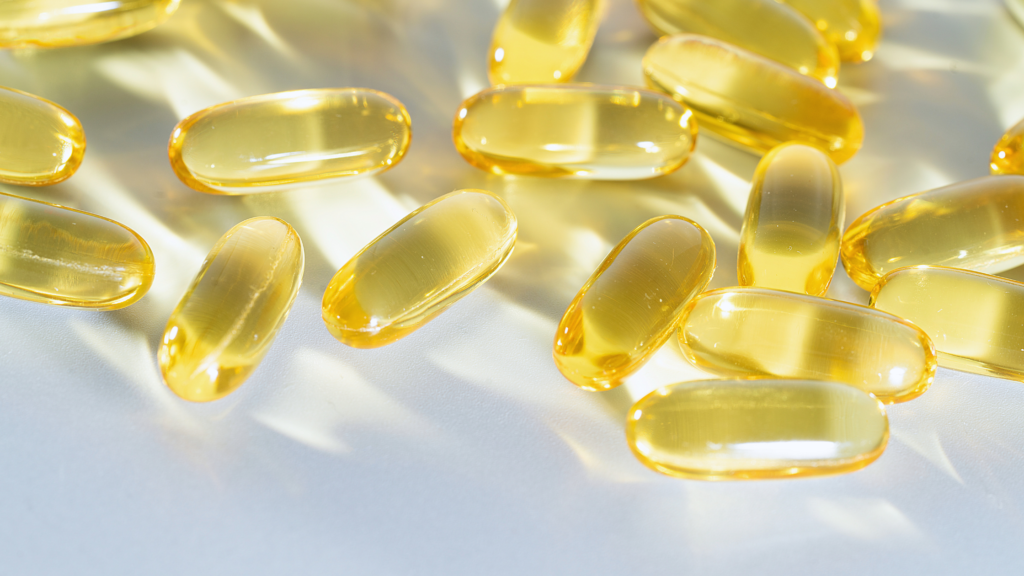As the leaves begin to change color and fall, it signals more than just the arrival of cooler temperatures. The shift in seasons also means shorter days and less sunlight—key sources of vitamin D. It’s time to bring out your vitamin D supplements to ensure you’re getting enough of this essential nutrient. With the average American spending less than 10 minutes outdoors each day, vitamin D levels have plummeted, which helps explain why there’s an increase in illnesses. Here’s why it’s important, how to take it, and the benefits it brings, especially when paired with vitamin K for maximum absorption.

1. Why Vitamin D is Important
Vitamin D plays a crucial role in several bodily functions. It helps maintain healthy bones and teeth, supports the immune system, brain, and nervous system, and regulates insulin levels. During the fall and winter months, reduced sunlight can lead to deficiencies, making supplementation necessary for many people.
Key functions:
- Promotes calcium absorption for bone health
- Reduces inflammation
- Supports muscle function
- Strengthens the immune system
With most people spending minimal time outdoors, particularly in cooler seasons, our vitamin D levels are at an all-time low, which could contribute to a rise in seasonal illnesses, fatigue, and mood disorders.

2. How and When to Take It
The best way is through supplements, especially during the fall and winter months when sun exposure is limited. However getting a minimum of 10 minutes of sunshine on your skin is still recommended in conjunction with taking the supplemental form. Vitamin D3 (cholecalciferol) is the most effective form, as it’s the same type of vitamin D that your body produces in response to sunlight.
Even if you’re eating vitamin D-rich foods or getting daily sunlight, it is still recommended to take a supplement during the fall and winter when sunlight exposure is less frequent. Foods high in vitamin D include:
- Fatty fish (such as salmon, mackerel, and sardines)
- Egg yolks
- Fortified dairy products (milk, yogurt)
- Cod liver oil
- Mushrooms (fun fact: place your store-bought mushrooms in the sun for 15-30mins as this will cause in increase in the vit d2 content. Sunlight-exposed mushrooms may be retained with refrigeration for up to 8 days.)

How much to take:
Most adults need between 600 and 2,000 IU per day, but it’s always wise to consult with a healthcare provider for personalized dosage.
When to take it:
Take your supplement with a meal that contains healthy fats, as it is fat-soluble and requires fat for proper absorption. Morning or lunchtime is often the best time to take it, as this mimics the body’s natural production cycle when exposed to sunlight.
Amazon Favorite Product Recommendation:
- GuruNanda Black Seed Oil, Cold-Pressed Nigella Sativa – Rich in Vitamin D3 + K2
- THORNE Vitamin D + K2 Liquid with a metered Dispenser
- Dr. Berg Vitamin D3 K2 w/MCT Powder
Disclaimer: As an Amazon Associate, we earn from qualifying purchases. This helps support the blog at no extra cost to you!
3. Signs of Vitamin D Deficiency
Vitamin D deficiency can manifest in various ways, and recognizing the signs early is crucial for addressing the problem before it affects your health. Common symptoms include:
- Fatigue and tiredness: Feeling unusually tired or low on energy can be an early indicator of low levels.
- Bone pain and muscle weakness: Vitamin D is essential for calcium absorption, so deficiency can lead to aches, pains, or even muscle cramps.
- Frequent illnesses: A weakened immune system can result from vit D deficiency, leading to recurrent colds, infections, or a longer recovery time.
- Mood changes and depression: Low levels have been linked to mood disorders like depression, particularly in the colder months.
- Hair loss: Severe vitamin D deficiency has been associated with hair loss in some cases.
- Slow wound healing: If your wounds are taking longer to heal than usual, it could be a sign of inadequate levels.

Disclaimer: This article is for informational purposes only and should not be considered medical advice. Always consult with a healthcare provider before starting any new supplement regimen, especially if you have underlying health conditions or are taking medications.
4. The Benefits:
Supplementing with vit D has numerous health benefits, especially during the colder months:
- Bone health: Helps with the absorption of calcium, reducing the risk of bone diseases like osteoporosis.
- Immune support: Enhances your immune system, making it easier to fight off seasonal colds and infections.
- Mood regulation: Vit D deficiency has been linked to seasonal affective disorder (SAD), so adequate levels can improve mood and reduce the risk of depression.
- Heart health: Helps regulate blood pressure and supports cardiovascular health.

5. Pairing Vitamin D with Vitamin K for Maximum Absorption
For maximum benefit, it’s important to pair vitamin D with vitamin K, specifically K2. While vitamin D helps your body absorb calcium, vitamin K2 directs that calcium to the bones and teeth, preventing it from depositing in the arteries or other soft tissues where it could cause harm.

Why the combination is key:
- Improves calcium distribution: Vitamin K2 ensures calcium is sent to the right places in the body, enhancing bone strength while avoiding potential issues like arterial calcification.
- Supports heart health: Together, vitamins D and K2 improve cardiovascular health by reducing the risk of calcium build-up in the arteries.
- Synergistic effect: These vitamins work in harmony to promote overall well-being, especially in bone and heart health.

As the fall and winter months bring shorter days and less sunlight, it becomes essential to maintain adequate levels of vitamin D. The benefits include stronger bones, a better immune system, improved mood, and heart health. Taking vitamin D alongside vitamin K2 ensures you’re not only absorbing calcium but also directing it to where your body needs it most. Make vitamin D part of your daily routine to stay healthy through the colder months.
Happy healthy Fall! x
Related Article: Seasonal Self-Care: How to Maintain Wellness This Fall



